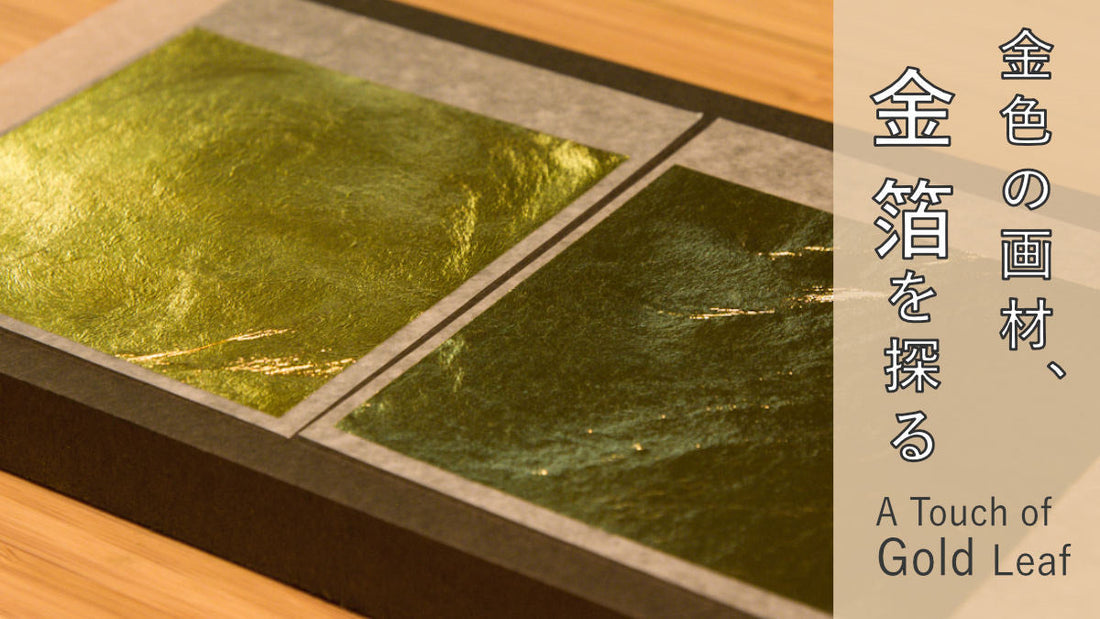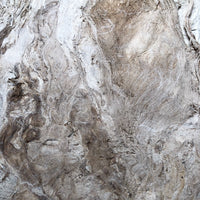Among every kind of art material, even if we say blue, there are all sorts of blue in the paints, and that same goes for gold.
Golden attracts people regardless of country or religion, and along with it, the relationship between the evolution of art and gold is, in a sense, inseparable.
There are various types of gold leafs, one of the gold painting materials, but what's the difference between them? In this article, we'll explore the question of "What's the difference exactly?" with five different types of gold leafs.
In Japan, there are two main types of gold leaf, Pure Gold Leaf and Brass Leaf, which we will be comparing, and another type called "Shinko-haku Junkin-iro” (Pure Gold Colored Silver Leaf), which is a new kind of metal leaf.
All of them are "gold-colored" metal leaf, but there is a difference in "whether they contain real gold", and both Brass Leaf and Shinko-haku do not have any gold in them.
Now, let's take a look at what each gold leaf is made of.

Pure Gold Leaf is actually alloyed with pure gold and small amounts of silver and copper, rather than 100% pure gold. Although there is 100% pure gold leaf, most of the gold leaf that is sold in art supply stores is this silver-copper alloy.
On the other hand, Brass Leaf is made of copper-zinc alloy and comes in two types: Aokuchi (Blue) and Akakuchi (Red).

In the photo below, there are five different kinds of gold leafs that we’re going to introduce in this article.
Can you tell the subtle difference between them?

Answer:
(Upper row, from left) Pure Gold Leaf No.4, Pure Gold Leaf Shogomo, Pure Gold Leaf Sanbu
(Bottom row, from left) Brass Leaf Aokuchi (Blue), Brass Leaf Akakuchi (Red)
The difference in color is caused by the percentage of metal content, and even the same pure gold leaf will come in different shade depending on the amount of gold it contains.
Same goes for the Brass Leafs, although the proportion is slightly different, the copper in Akaguchi is a little more reddish than the Aokuchi one.
Therefore, here are the names of gold leafs that you’re not familiar with.
Shogomo, No.4, Sanbu etc., what is the meaning behind these names?
The name of pure gold leaf is related to the manufacturing process and the percentage of metal content. The difference in gold content changes the name and price of the gold leaf. From the highest percentage of gold content, they are referred to as Gomoushoku, No.1, No.2, No.3, No. 4, Sanbu, and Teishoku.
Moreover, what is the difference between "断切 (Tachikiri)" and "縁付 (Enzuke)" mentioned at the end of the product names?
In order to produce such a thin metal leaf, it is beaten tens of thousands of times. Therefore, a traditional Japanese paper, called "haku’uchi-shi" (hammering paper), which is durable and flexible, is put between the metal leafs.
The gold leaf that made with haku’uchi-shi is called "縁付 (Enzuke)".
On the other hand, "断切 (Tachikiri)" is made from a simpler sheet of paper, called “glassine paper”, it is used for striking the metal leaf.
Basically, the "Enzuke" metal leaf is cut into squares by hands after the stamping process, but the "Tachikiri" metal leaf is cut all at once with the glassine paper.

Let's try applying some gold leaf and comparing the different characteristics of them.
Pure Gold Leaf is so thin that even the slightest breath will cause it to scatter.
You may be able to lift the Brass Leaf with dry hands, however, the gold leaf can stick to hands easily, so we recommend you to put some baby powder on your hands or pick it with the bamboo tweezers.
You can tell they are totally different kinds of gold leaf by touching them.
For those who are new to using gold leaf or want to learn a little more about it, we also provide tutorial videos and art materials sets. Both items are sold separately, you may purchase the video alone if you already have the tools.
PIGMENT TOKYO also offers a set for those who would like to use other kinds of colored silver leaf besides gold leaf, and for those who prefer something more casual.
You might have a touch of the beauty of the metallic painting materials through the glimpses of gold leaf.









